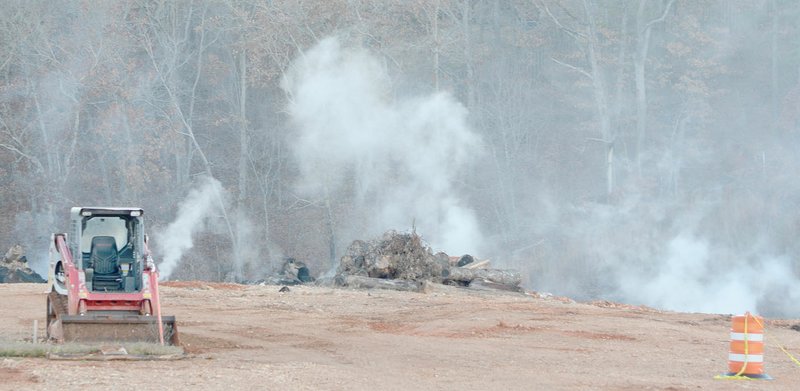The EPA released a report last week detailing some options for suppressing the former stump dump fire alongside Trafalgar Road.
According to the report, in addition to air quality sampling, the EPA agreed to secure a fire expert to provide information on the fire and recommendations to extinguish it quickly while creating minimal environmental and health issues.
The options presented include the insertion of inert gas into the stump dump site, a foam or chemical treatment and excavation of burning materials.
All options are made more difficult, according to the report, because additional site preparation is needed to safely bring equipment to the site.
Insertion of gas could be done via a hole bored into the ground, where an inert gas would be injected to starve the fire of oxygen. According to the report, this may prove difficult for this particular site because the ground is believed to contain many voids, which could reduce the treatment's effectiveness.
Furthermore, the injection has a limited effective radius, meaning many injection sites may be needed. Moreover, the ground is not stable enough to move vehicles into position.
Additionally, the gas injections are historically effective until the gas injection stops, at which point the material resumes burning.
The report concludes it is doubtful that gas injection is an effective method at this site.
Foam or chemical treatment can also be applied through holes bored into the ground.
There are similar difficulties to gas insertion, according to the report, as well as potential environmental issues that foams and chemical treatments could cause. The report suggests these chemicals could contaminate the surface and ground waterways, and any treatment using foam would need a water containment area to be built to prevent stream contamination.
The report concludes foam would be a difficult solution with potential contamination issues.
Excavation and dousing is the third method discussed in the report.
The EPA report suggests that, while vehicle access is currently impossible, a 20- to 25-foot wide road or fire break around the site would allow trucks to access and excavate it.
An excavator would be used to remove material from the former dump and a water cannon truck would douse those materials to put out any fire. Once all material is doused, it can be returned to the site and capped to prevent future fires and keep water out, or it may be moved off-site altogether.
According to the report, because of a lack of compaction, this could be the only way to access all hot spots.
The odor and smoke may become worse during excavation, according to the report, and it would be important to inform residents to ensure they take necessary precautions.
A temporary collection area would also be needed, according to the report, to collect waters used to control flames and douse waste in order to prevent surface and ground water contamination.
The report suggests that, if this option is chosen, workers use the winter season when residents are already likely to spend more time indoors, reducing exposure to increased smoke levels.
General News on 12/26/2018

